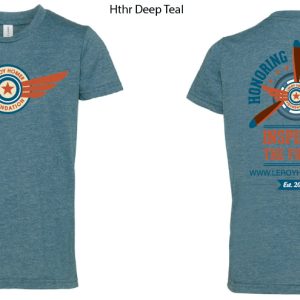Recent Comments
- Sheree Moon on CoastLine: Melodie Homer on how losing her pilot husband on 9/11 shaped her life’s work
- Katherine I. Torres on Hero’s Dream Carried on by Scholarships
- Vincent Brown, MSgt, USAF Ret on Are you really an Air Force pilot?
Shop Our Products
-
 Youth T-Shirt - Heather Deep Teal
$18.99
Youth T-Shirt - Heather Deep Teal
$18.99
-
 Adult T-Shirt - Heather Storm
$18.99
Adult T-Shirt - Heather Storm
$18.99
-
 Adult T-Shirt - Heather Slate
$18.99
Adult T-Shirt - Heather Slate
$18.99
-
 Commemorative Patch
$5.00
Commemorative Patch
$5.00

As you begin: Part 61 vs Part 141, PRIA & Checkrides
A word about Flight Training:
Part 61 or Part 141?
Private Pilot Certification may be completed under either a Part 61 or a Part 141.
Questions often are asked regarding pilot training, and the Federal Aviation Regulations that define it, whether a student pilot should train under Part 61 or Part 141 and how performance in evaluations can impact any future career plans. This briefing is not intended to be a complete discussion but rather to familiarize future students with these aspects of aviation training.
Part 61 and Part 141 are two different sets of Federal Aviation Regulations (FAR) governing flight training in the United States. Part 61 is less structured and more flexible, allowing for personalized training, while Part 141 is more structured with an FAA-approved curriculum and typically requires fewer flight hours for certain certificates.
Part 61:
Part 141:
Choosing between Part 61 and Part 141:
Part 61 or Part 141 and the Restricted Airline Transport Pilot (R-ATP) Certificate:
To be eligible for possible reductions in age and hour requirements with a Restricted ATP (R-ATP) program, Flight training beyond the Private Pilot Certification (such as instrument rating and others) must be done within the structure of an organizations certificate Part 141 program. Note: not every Part 141 school is approved for the R-ATP! Please review http://www.faa.gov/pilots/training/atp/media/Institutional_Authority_List.pdf
A Restricted ATP (R-ATP) allows eligible pilots to begin their airline career with reduced flight hour requirements, typically 1,000 or 1,250 hours total flight time experience instead of the standard 1,500 hours for an unrestricted ATP, but with limitations on serving as Pilot-in-Command. To qualify for an R-ATP, candidates must meet specific age and flight hour criteria, often coupled with a degree from an FAA-approved program.
Key Requirements for R-ATP:
Key Differences from Unrestricted ATP:
Integrated Airman Certification and Rating Application, Pilot Records Improvement Act, Pilot Records Database and Performance in Checkrides and Evaluations
Questions also arise pertaining to checkride performance, evaluations, what records are kept and how they can impact an aviation career. When a pilot first begins flight training they are entered into the Integrated Airman Certification and Rating Application (IACRA.) The FARs require a Pilot Records Database (PRD) as mandated in the Pilot Records Improvement Act (PRIA) which allows “Air Carriers and Operators for Compensation or Hire” to review a pilot applicant’s safety information including training, experience and qualifications. Anyone can have a challenging day or circumstances that yield a checkride or evaluation that is below performance requirements. It happens and it isn’t the end of your aviation journey. As a student begins the journey of flight training, it is important they are aware performance is reported at certain points along the certification path. Those events should be treated with great respect and adequate preparation. Much like an academic grade point average, your past performance in evaluations is a consideration by employers and a history of challenges can be limiting in certain aviation career employment.
If a pilot has an unsatisfactory checkride, it will show up on their PRD. All companies are required to perform a background check and the failure will show up. Therefore, disclose any and all failures.
Finally, a word on funding flight training.
Flight training can be an expensive and multi-year endeavor. Achieving a Private Pilot Certificate alone can take 6 months and more than $10,000. Finding ways to make that dream come true can include scholarships from The LeRoy W. Homer Jr. Foundation, Experimental Aircraft Association (EAA), Aircraft Owners and Pilots Association (AOPA) and many other aviation organizations. An excellent list of scholarships and resources is available at www.clearedtodream.org, the short and easy URL for the Air Line Pilot Association, Intl. (ALPA) Education Committee page. Recent legislation also allows pilots to use savings programs like 529 plans which are tax-advantaged savings plans designed to help individuals save for education expenses.
If the flight school you are considering requires contracts or training agreements, make sure you understand all the terms and conditions of the flight school before committing to the training. Also, ensure you know the insurance coverage provided by the flight school and your responsibilities regarding it.